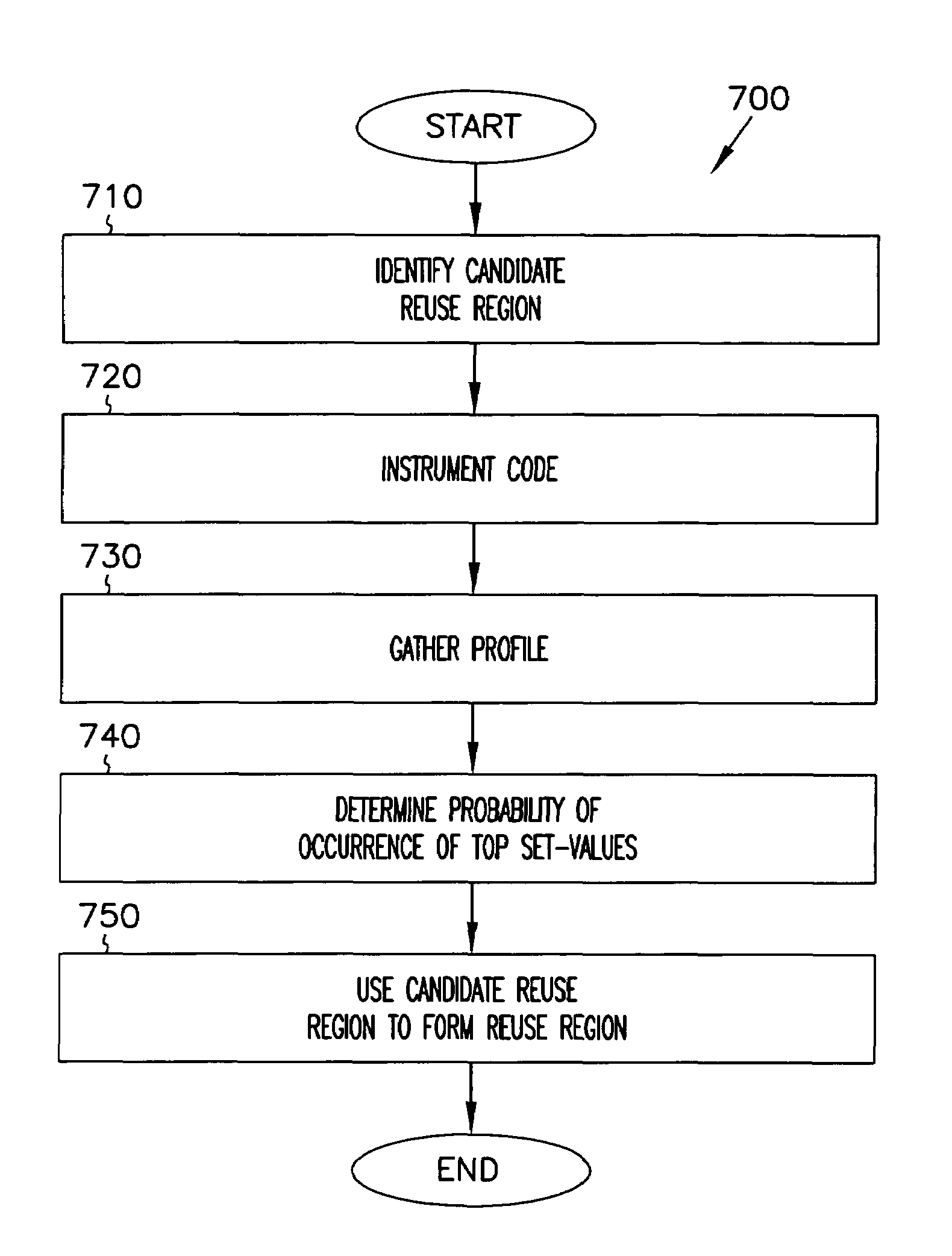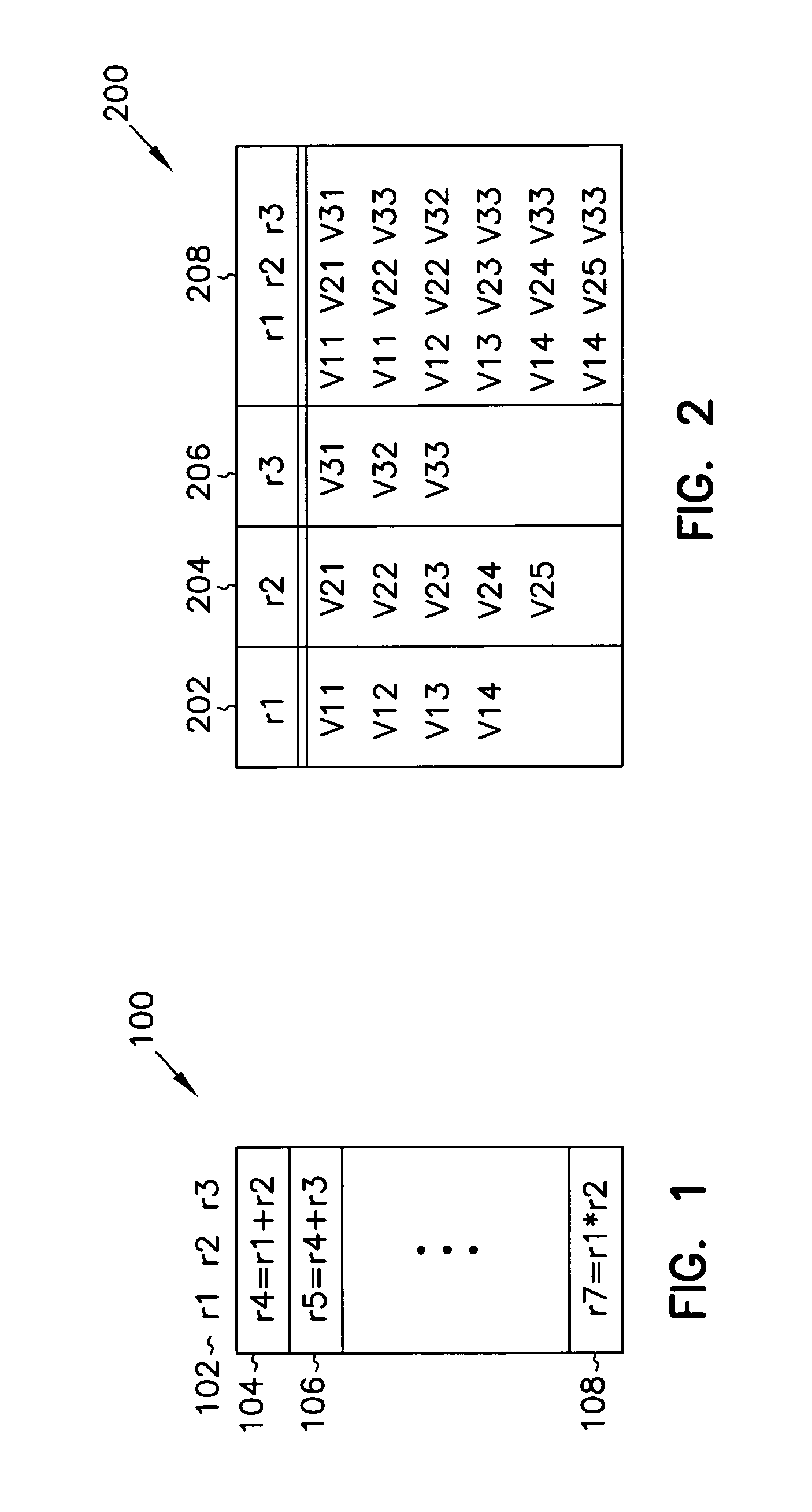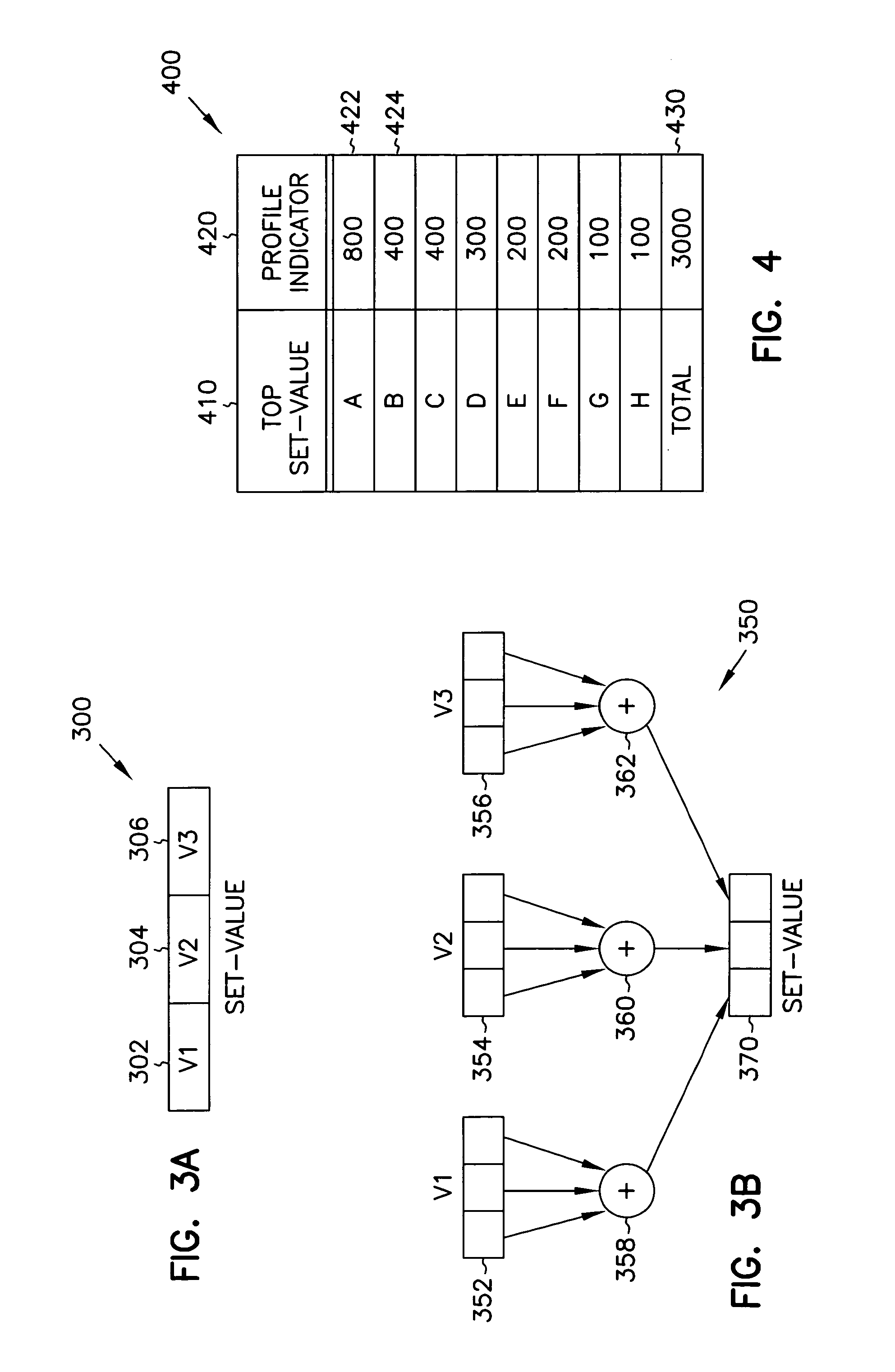Software set-value profiling and code reuse
- Summary
- Abstract
- Description
- Claims
- Application Information
AI Technical Summary
Problems solved by technology
Method used
Image
Examples
embodiment 500
[0044]FIG. 5A shows a sampling value profiler. As previously described, a good computation reuse region can be selected based on the frequency of occurrence of top set-values. The frequency of occurrence of top set-values can be ascertained by statistically sampling a sufficient number of set-values without sampling every single one. As shown in embodiment 500, value profiler 506 receives one of every “S” set-values from filter 504. Filter 504 receives a set-value 502 each time a candidate reuse region is encountered during profiling, but only passes one of every S set-values to value profiler 506. By sampling every S values, an approximation of the probability of occurrence of top set-values is generated. FIG. 5A shows the sampling mechanism in schematic form. FIG. 5B shows an embodiment of a sampling profiler using pseudo-code.
[0045]FIG. 5B shows instrumenting code that implements the sampling value profiler of FIG. 5A. Instrumenting code 520 shows four instructions. In some embod...
embodiment 600
[0056]FIG. 6A shows software instructions that access an array. Embodiment 600 shows software instructions in an end-user program that include a load instruction. The load instruction occurs when the array access is made shown as “a[i]” in FIG. 6A. In instruction 602, a variable “x” is initialized to zero. Instruction 604 is the beginning of a “for” loop, and instruction 608 is the end of the “for” loop. Instruction 606 is executed “M” times within the “for” loop.
[0057]Instruction 606 can be a good reuse instruction if a small number of top location-values account for a majority of the memory loads. For example, if the array “a” is invariant, each time a particular location within the array is accessed, the value retrieved will be the same. The method and apparatus of the present invention collects top memory locations and top load values as a set. The load location and loaded value is treated as a combined location-value, and the combined location-values are profiled to collect the...
PUM
 Login to View More
Login to View More Abstract
Description
Claims
Application Information
 Login to View More
Login to View More - R&D
- Intellectual Property
- Life Sciences
- Materials
- Tech Scout
- Unparalleled Data Quality
- Higher Quality Content
- 60% Fewer Hallucinations
Browse by: Latest US Patents, China's latest patents, Technical Efficacy Thesaurus, Application Domain, Technology Topic, Popular Technical Reports.
© 2025 PatSnap. All rights reserved.Legal|Privacy policy|Modern Slavery Act Transparency Statement|Sitemap|About US| Contact US: help@patsnap.com



